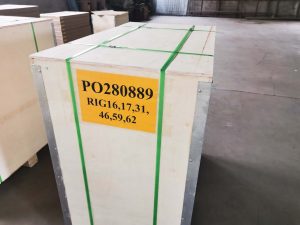Shaker screen life is usually considered as an important issue. Then how long should a high quality shaker screen last during operation? Is there any standard or tips? How can we get screen lasted longer? Please find following information for your reference.
How long is usable life of shaker screens in common well drilling?
Screen usable life is a really comprehensive question but often asked by clients. There are so many different issues affect its life. Including screen itself quality, operator professional level, mud condition or working condition, shaker condition, handling way, cleaning and maintenance on screen, storage condition, and so on. These are factors from buyer or user.
As per present information we get the screen life of different models or brands is from 20 hours to 22 days. This data including many different pattern of screen, different API size screen, different working condition. How should we consider this ask reasonably? Make records and test regularly during well drilling. Such as drilling condition, mud property, filtration result, screen life, and so on. Compare screens last differently under same condition then find out the better screen. If we select screens improperly even they last over 30 days that makes no sense. We have some feedback from our users under a certain condition with their satisfaction. Please check below feedback:
- API 140 screen
Hole size 12 1/4” while depth 9100 to 13400 ft
Mud weight: 10.9lbs
Formation: shale/sand
Hours run: about 160 hours
Screen failure: due to normal wear to top layer
Result: Satisfactory on screen life
- API 170 screen
Hole size: 8 1/2” while depth 1131 to 1535m
Mud density: 1.08Sg
Mud system: WSM&Gel Sweep
Duration: Aug.18- Aug.20
Shaker degree: +3°
Result: Excellent solids throughput, conveyance was excellent, minimum fluid loss, no wear over served on screens after TD section achieved
There are also oral feedback from many other users, but without sufficient reference information. Please find our suggestions or recommendation on enhancing screen life during oil drilling:
- Keep the screens clean
- Storage of used screen should be on racks if they are to be reused.
- Screens for reuse should be marked with previous hours run so that screen TOTAL life is known.
- Maintain a proper beach at end point on the screen. The screen should be kept 75-85% flooded inside the shaker. Too much beach leads to screens being abraded by dry cuttings and premature wear can occur
- Before drilling commences inspect all shakers condition, such as compression status, tension fingers,mounting rubbers, channel rubbers, side plates coating, jack, and motor voltages, deck angle, etc.
- Check motion of shakersand G force if possible.
- Clean off dry cake build-up from the motors
- Look for any leaks around the header tank and sump
- If flow rate is high keep bed inclination at higher degree preferably 4-degree to ensure proper pool vs beach ratio. As soon as flow rate is stable (reduced) reduce bed inclination preferably at 2 to 3-degree.
- On Top hole drilling run less fine screens such as API 60 or 80 to avoid premature degradation of the screens
How long is the recommended shelf life for screens?
Depending on screen types. For example, if the screen is frame type without rubber strip backside nor rubber sealing on sides, we can store it on shelf for 2-3 years. But the storage condition is away from extreme weather and moisture. Why? We know screen panels including frame and S.S screen cloth. The frame is a steel frame (coated) or composite frame. There are elements that will age and this affects screen life & performance. For screens fit with rubber strip or sealing rubber, the suggested shelf life is no longer than 12 months. As we know, the rubber material is easy to age even under common storage condition. For all screens, when we keep them in a warehouse please consider below suggestions
- Clean them after every working shift
- Keep screens packed in cartons and even in plywood cases if possible
- Keep the panels away from extreme weather, especially heat. Away from moisture, though there is coating and material is S.S
- Stack them in order and mark panels clearly for convenient check and handle
- Move screens gently, especially pay attention to screen surface to avoid damage by potential collision
Are all screens repairable?
How do we repair it? Why do we repair it? We use plugs to cover the broken area on screen panel. Usually, the plug is slightly larger than the hole of grids or damage area to make it tightly to the hole side. We repair screens consider 3 main reasons. One, repairing avoids further larger damage, two, repairing avoids mud loss, the other is repairing helps save cost to replace the screen with little worn. In some degree, repair screens enlong the shaker screen life.
We can’t repair all of screens. Presently, at Aipu Solids Control we provide repair plugs for flat screens made by us and for some typical famous brand shaker screen. Such as Cobra series screen, PWP48x30, PWP500, Mongoose series and so on. Furthermore, if we have made screens for you, they can be repaired with plugs produced by us, no matter it is a famous brand or not. To check if your screens are repairable please tell us the shape of a punched panel on the frame. Including shape, sides, the thickness of the sheet. Moreover, we need to confirm is it necessary to repair a screen panel. According to the worn area, or broken ratio. We suggest repairing the screen broken area is no more than 25%.
We think above information is sufficient and necessary for users. And it's typical questions clients usually ask. If you do have other question or special doubt on shaker screens, please feel free to contact Aipu solids control


